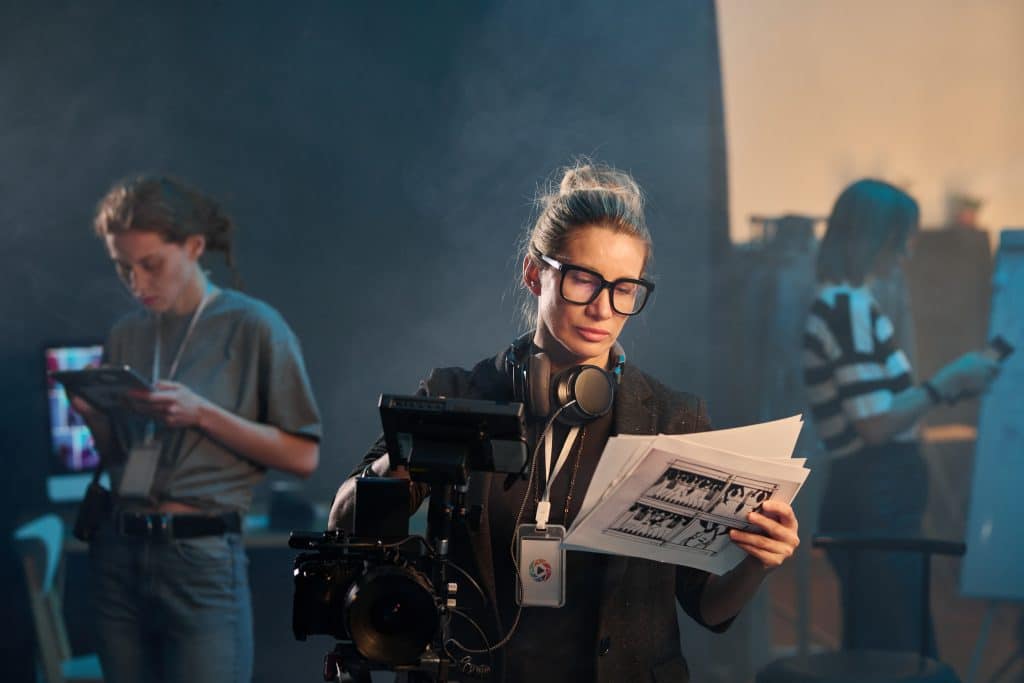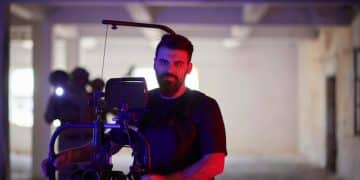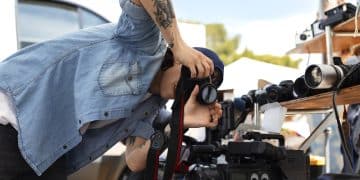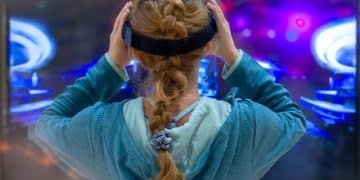Casting controversies: The untold stories behind iconic roles and near misses

The entertainment industry is rife with “what-ifs” as casting decisions, often shrouded in secrecy and fraught with complex dynamics, frequently lead to casting controversies that shape indelible cinematic and televisual legacies.
The intricate world of filmmaking and television production often hides a labyrinth of decisions behind the scenes, none more pivotal and debated than casting.
From the iconic roles that define careers to the near misses that could have reshaped cinema history, casting controversies illuminate the interplay of talent, timing, and politics that decide who lands the part.
These narratives are not mere gossip. They offer insights into the creative process and the pressures faced by actors and directors, showing how one decision can alter cultural history.
The labyrinth of casting decisions: More than meets the eye
Casting for any film or series is a high-stakes gamble. It’s not just about finding a talented actor but the one who embodies a character, resonates with audiences, and satisfies both the director’s vision and the studio’s financial interests.
This process is rarely simple. It involves extensive auditions, screen tests, and intense debates among producers, directors, and casting directors.
What seems on screen like a seamless match is often the result of weeks, sometimes months, of deliberation, negotiation, and casting controversies. The public rarely knows about the near choices or the actors who were rejected at the last minute.
These untold stories expose the fragility of a career and the cultural ripple effect of a single casting choice.
The director’s vision vs. studio pressure
A major source of casting controversies arises from the tension between artistic integrity and commercial appeal.
Directors often have a specific actor in mind, believing only that person can embody the character. But studios, driven by box office guarantees, push for established stars with market appeal, even if they aren’t the creative first choice.
This clash often results in heated negotiations and compromises. At times, directors threaten to abandon projects if studios override them.
These conflicts reveal that casting is not just an art form, it is also a business decision. The outcome can redefine cinematic history and create legendary casting controversies that fans still debate decades later.
Iconic roles and the actors who almost played them
Sometimes a role becomes synonymous with an actor’s identity. But behind many of these career-defining portrayals lie stories of near misses and casting controversies.
Take Tony Soprano in The Sopranos. James Gandolfini’s performance redefined television anti-heroes. Yet Steven Van Zandt was nearly chosen despite no acting experience. He ended up as Silvio Dante, another role now considered iconic.
These “what-ifs” highlight how fragile and arbitrary the casting process is, and how casting controversies can lead to unexpected brilliance.
The case of “The Godfather” and Al Pacino
Francis Ford Coppola’s battle with Paramount over casting Michael Corleone is legendary. The studio wanted stars like Robert Redford or Ryan O’Neal.
Coppola, however, insisted on Al Pacino, a then-relatively unknown actor. The conflict sparked one of the most famous casting controversies in film history.
Pacino’s eventual performance proved Coppola right, cementing his place in cinema. This saga shows how fighting for artistic vision can overcome commercial resistance.

The “almost” files: When star power collides with character
There exists a parallel universe of “almosts”, roles that nearly went to different stars. These casting controversies reveal the delicate balance between star persona and character needs.
For example, Stuart Townsend was originally cast as Aragorn in The Lord of the Rings, only to be replaced by Viggo Mortensen at the last moment. This sudden shift transformed a potential disaster into one of the most celebrated performances in fantasy cinema.
Similarly, Will Smith turned down Neo in The Matrix. His choice to star in Wild Wild West instead is often cited as one of Hollywood’s biggest casting controversies, paving the way for Keanu Reeves to define a generation of sci-fi heroes.
The audition room: A crucible of dreams and disappointments
The audition room is where many casting controversies begin. It’s a place of high pressure, where chemistry, charisma, and luck matter as much as talent.
Actors like Jennifer Lawrence, whose audition for Katniss Everdeen reshaped her career, remind us of the power of the right audition.
On the other hand, Christian Bale nearly became James Bond in Casino Royale. Producers ultimately chose Daniel Craig, creating another example of how casting controversies shape careers and franchises alike.
Chemistry reads and on-set synergy
Beyond solo auditions, chemistry reads test how actors connect. Some of the most iconic pairings emerged from unexpected matches.
But failed chemistry can also fuel casting controversies, leading to sudden last-minute changes.
These subtle decisions underline that casting is as much about human connection as technical skill.
Typecasting and breaking the mold: A double-edged sword
Typecasting traps actors in certain roles, sparking new forms of casting controversies. While it provides steady work, it often stifles artistic growth.
Matthew McConaughey broke free from rom-com stereotypes in the so-called “McConaissance.” Bryan Cranston shocked audiences by transforming from sitcom dad to Walter White in Breaking Bad.
These reinventions challenge the comfort of typecasting and highlight how casting controversies can redefine entire careers.
The ethical dilemmas of casting: Authenticity, representation, and “whitewashing”
Beyond artistry, casting controversies often ignite ethical debates.
Scarlett Johansson’s role in Ghost in the Shell and Emma Stone in Aloha are prime examples of whitewashing. These controversies exposed Hollywood’s history of erasing marginalized voices, fueling public demand for authenticity.
Such debates remind us that casting decisions affect not only films but also cultural identity and representation.
“Whitewashing” and cultural appropriation
Casting white actors in roles written for characters of color remains one of the most heated casting controversies.
It undermines diversity, robs opportunities from underrepresented groups, and perpetuates systemic bias. Public backlash has forced studios to reconsider these practices, proving the power of audience voices.
Future trends and the evolving landscape of casting
Casting is evolving with technology, globalization, and shifting social values. Yet, as new methods emerge, so will new casting controversies.
Virtual auditions and self-tapes have broadened access but created new challenges. AI tools promise efficiency in casting, but they also raise questions of bias and authenticity.
Will algorithms enhance or hinder diversity? Can technology replace human intuition? These debates show that casting controversies will remain at the heart of film and television for years to come.
| Key Insight | Brief Description |
|---|---|
| 🎬 Iconic “Almosts” | Many legendary roles nearly went to other actors, altering cinematic legacies. |
| ⚖️ Vision vs. Commerce | Director’s artistic choices often clash with studio’s financial pressures. |
| 🎭 Typecasting Battles | Actors struggle to break free from roles they’re commonly associated with. |
| ✊ Authentic Representation | Growing demand for diverse and accurate portrayal challenges industry norms. |
Frequently Asked Questions (FAQ) about Casting Controversies
Casting decisions become controversial due to a mix of artistic vision, commercial pressures, and public expectations. Directors and studios might disagree on who embodies a role best, while audiences react strongly if a beloved character is portrayed by an unexpected or seemingly mismatched actor. Ethical concerns like “whitewashing” or lack of authentic representation also fuel controversy, reflecting broader societal debates.
“Whitewashing” is the practice of casting white actors in roles that were originally written for or are implicitly intended for characters of color. This removes opportunities for diverse actors and often results in inauthentic portrayals. It has led to significant public outcry and reflects historical biases within the entertainment industry, contributing to controversies over representation.
Typecasting offers consistent work by repeatedly casting actors in similar roles based on their previous successes or physical appearance. While financially stable, it can limit an actor’s creative range and their ability to secure diverse roles. Many actors actively fight against typecasting to prove their versatility and expand their artistic opportunities beyond a narrow character archetype.
Chemistry reads are crucial auditions where potential co-stars perform together to assess their on-screen dynamic. They determine if actors have a natural, believable connection that translates into compelling character relationships. This intangible synergy often dictates final casting decisions, as a successful pairing can significantly elevate a film’s emotional impact and audience engagement, even if individual talents are strong.
AI is increasingly being used to analyze actor data, streamline initial selections, and suggest candidates. While promising efficiency and data-driven decisions, it raises concerns about algorithmic bias, the potential reduction of human intuition in artistic choices, and the ethical implications for actors’ careers. The debate on balancing technological advancement with the irreplaceable human element in casting is ongoing.





